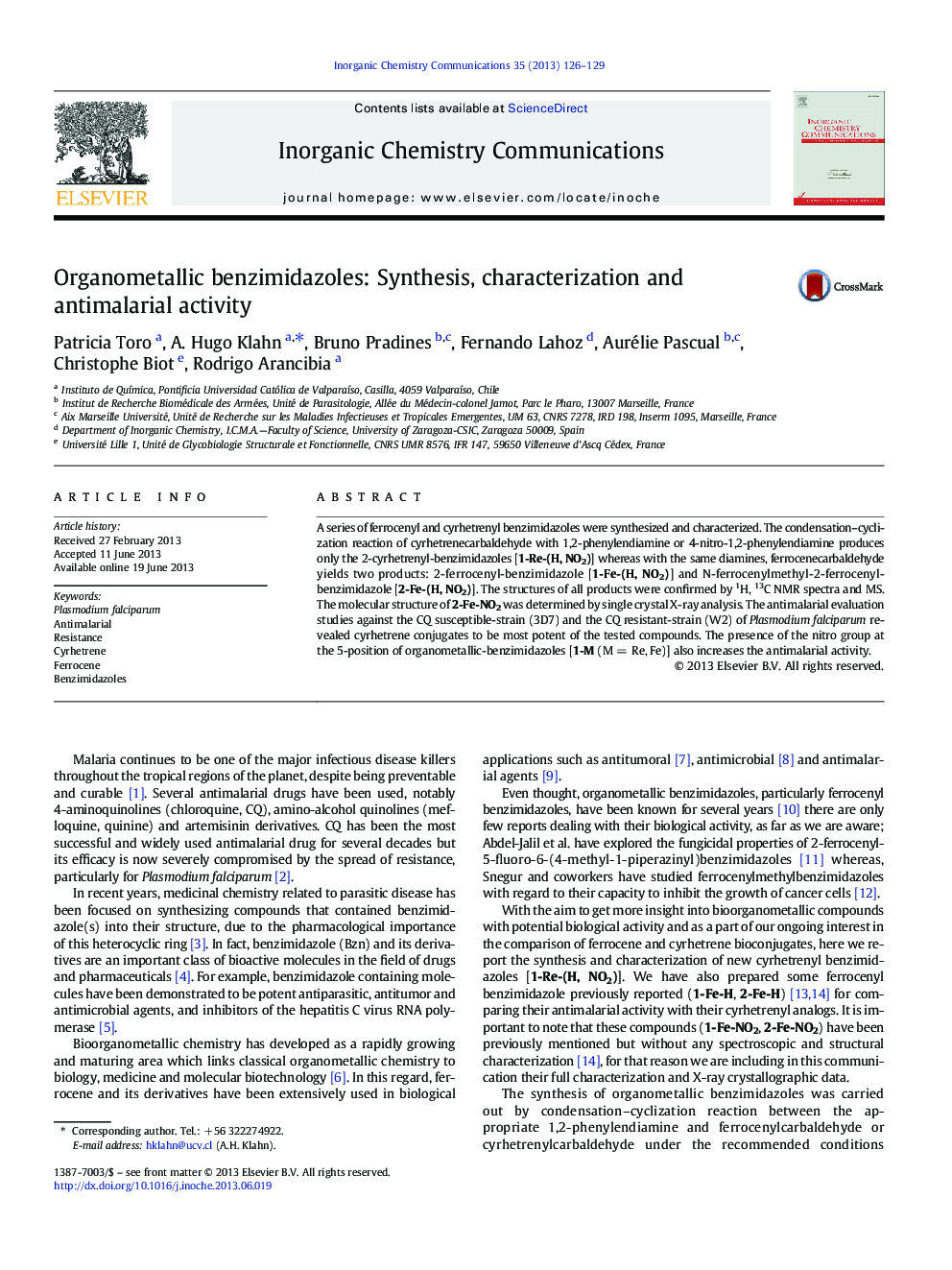| Article ID | Journal | Published Year | Pages | File Type |
|---|---|---|---|---|
| 1303842 | Inorganic Chemistry Communications | 2013 | 4 Pages |
•Cyrhetrenyl- and ferrocenyl-benzimidazoles have been prepared.•Compounds were characterized by spectroscopy and one of them by crystallography.•Cyrhetrenyl benzimidazoles are more efficient antimalarial agents.
A series of ferrocenyl and cyrhetrenyl benzimidazoles were synthesized and characterized. The condensation–cyclization reaction of cyrhetrenecarbaldehyde with 1,2-phenylendiamine or 4-nitro-1,2-phenylendiamine produces only the 2-cyrhetrenyl-benzimidazoles [1-Re-(H, NO2)] whereas with the same diamines, ferrocenecarbaldehyde yields two products: 2-ferrocenyl-benzimidazole [1-Fe-(H, NO2)] and N-ferrocenylmethyl-2-ferrocenyl-benzimidazole [2-Fe-(H, NO2)]. The structures of all products were confirmed by 1H, 13C NMR spectra and MS. The molecular structure of 2-Fe-NO2 was determined by single crystal X-ray analysis. The antimalarial evaluation studies against the CQ susceptible-strain (3D7) and the CQ resistant-strain (W2) of Plasmodium falciparum revealed cyrhetrene conjugates to be most potent of the tested compounds. The presence of the nitro group at the 5-position of organometallic-benzimidazoles [1-M (M = Re, Fe)] also increases the antimalarial activity.
Graphical abstractA new series of organometallic benzimidazoles containing the cyrhetrenyl and ferrocenyl fragments have been synthesized and characterized. Biological evaluation against the CQ susceptible-strain (3D7) and the CQ resistant-strain (W2) of Plasmodium falciparum indicates that the cyrhetrene conjugates are more active than their ferrocenic analogs.Figure optionsDownload full-size imageDownload as PowerPoint slide
